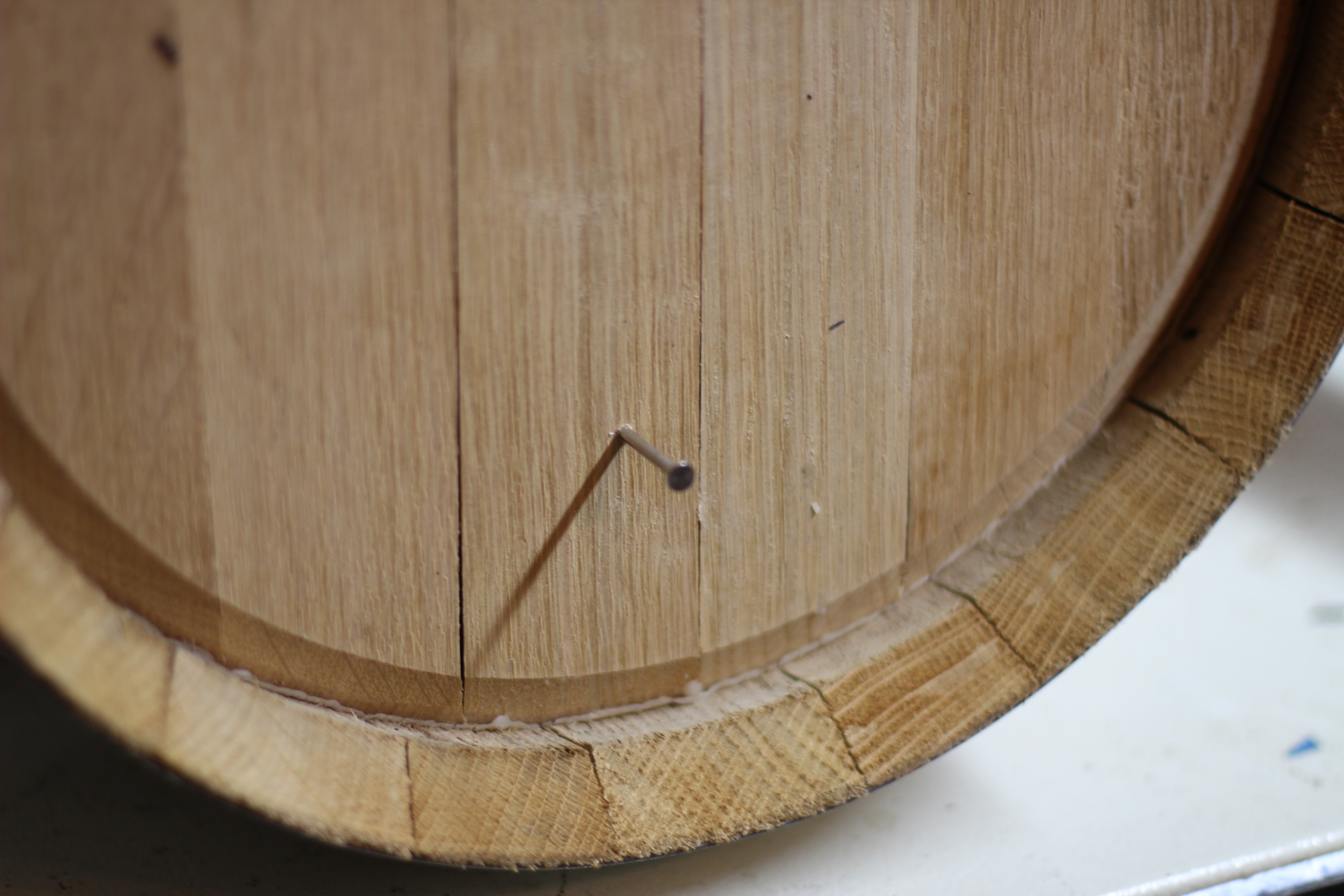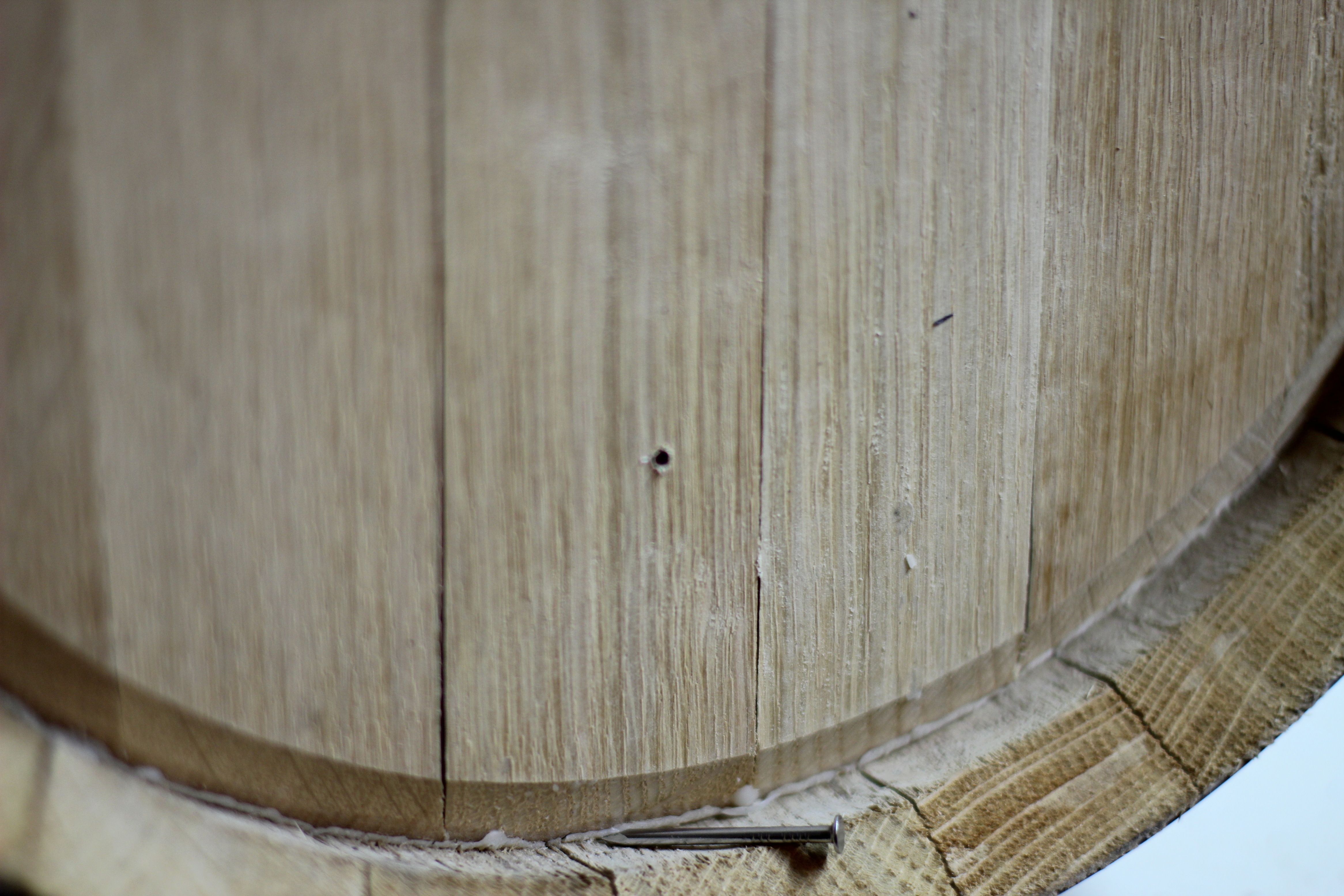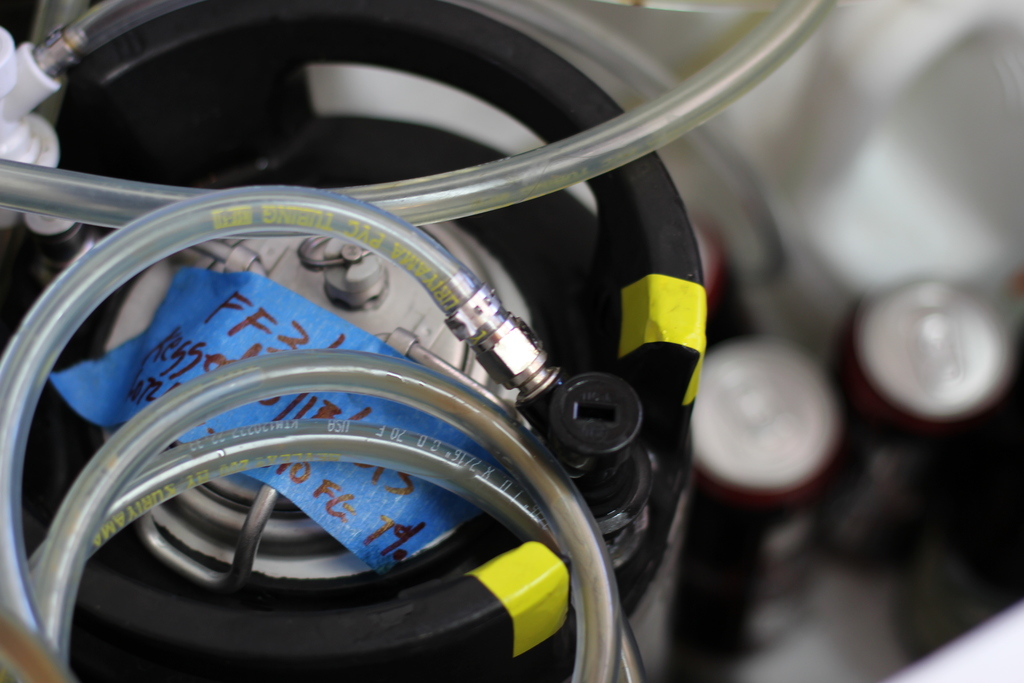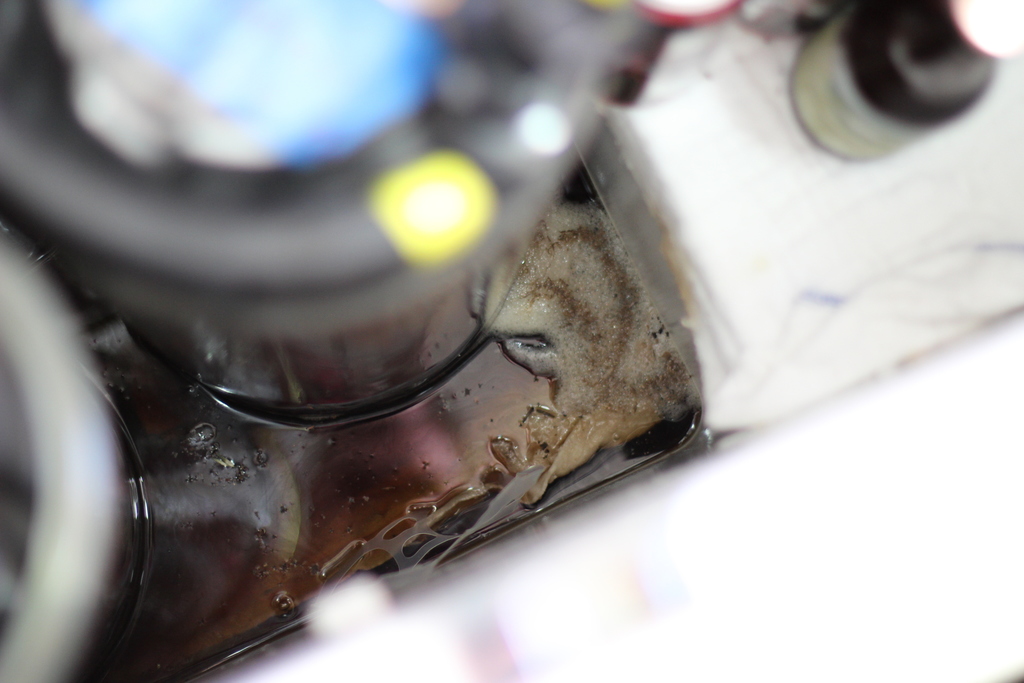A while back I brewed 10 gallons of an English Mild. The initial plan was to split the batch into two 5 gallons portions. For the first half, pitch the wort onto the yeast from my first Flanders Red sour and for the second, use regular brewer’s yeast for a non-sour English Mild. Along the way the non-sour portion ended up in my 5 gallon oak barrel to start the process of working the oak flavor out of the new barrel to eventually be used to hold more sour beers.
It was going to be a rough two weeks. Hours after racking Fancy Lad into the new oak barrel, I realized that I hadn’t really worked hard enough to seal the barrel. It was leaking beer pretty steadily. After a few old cloth diapers and the use of a heavy fan, I had slowed the leak. In a few days though I noticed that the outside of the keg was growing some mold or something. I immediately wiped this off and wondered what was going to happen.
The second mistake with Fancy Lad in the barrel was leaving it in way too long. Though with tasting, it was hard to tell since I used a beer that I’ve never tasted before. I couldn’t quite tell where the beer ended and the oak began. I also picked up a soap-like flavor. Is that young beer, an infection, or too much oak?
After reading around, the best advice I found was the 3-3-3 rule for new oak barrels. The first beer gets 3 days in the barrel, that’s it. Then 3 weeks for the second beer and then 3 months for the third. After that, most or all of the oak flavors are gone and the barrel either needs to be re-charred, or used for long term aging.
Fancy lad spent two weeks in the barrel, not 3 days. When I racked and carbed, the flavor didn’t improve at all. Inspecting the barrel revealed a bunch of white floating spots. I posted the photos to a few boards, but no one knew for sure what it was. After a few weeks in the keg carbing, it was clearly turning more and more sour.
My initial thought was to drain-pour this terrible result. But, the more I thought about it, the more interested I was in seeing if the beer can be rescued. I decided that it should get *more* sour, not less.
I added sour beer bottle dregs, from Jester King’s Funk Metal and Logsdon Farmhouse Ales’ Seizoen Bretta. I’ve pulled the keg from the chest freezer and I’ll condition this beer in the keg for months, adding additional sour dregs as I drink the bottles. I’ll also mix in some malto-dextrins to beef up the mouthfeel.
Here’s hoping for a post in 6 months about how great Funky Lad has become.









